| Breeds of Sheep
India can be divided on the basis of the agro-ecological conditions and type of sheep into 4 regions viz. I. North-Western, Central arid and semi-arid region II. Southern region, III. Eastern region and IV. Northern temperate region. There are about 44 descript breeds of sheep available in India.
I. North-western, central arid and semi-arid region
Hissardale
Hissar and hilly regions of Kulu in Haryana. It was evolved by crossing Bikaneri with Merino rams. Average body weight of rams and ewes are 54 and 34 kg respectively most animals are polled. Colour is predominantly white, although some brown patches may be observed. Wool is of superior quality yield 2-3 kg per annum.
II. Southern region
Important breeds in this region are
Nellore: Nellore, Prakasam and Ongole districts of Andhra Pradesh tall animals with little hair except at brisket, withers and breech. Rams are horned ewes are polled. Long and drooping ears; 86% of animals have wattles male: 36 kg female: 28 kg
Mandya: Mandya district of Karnataka. Relatively small animals colour white - sometimes face is light brown, which may extend up to neck. Compact body with typical “U" shaped conformation from the rear. Ears long, leafy and drooping. Both sexes polled. Coat extremely coarse and hairy adult male: 35 kg, female: 23 kg.
(Source: Dr. Acharya, Handbook of Animal Husbandry)
Selection of sheep for breeding
- It is necessary to select suitable improved breed of sheep available in particular area.
- Crossbred sheep are available for purchase from state Government / Government of India sheep breeding farms.
- Ewes can be purchased in regular sheep markets or from breeders in villages, while male sheep (rams) of exotic / crossbred from Government farms.
- It is desirable to purchase healthy animals of 12-18 months of age.
- A certificate regarding age and health of sheep should be obtained from the veterinary assistant surgeon.
- The animals purchased have to be identified by fixing ear tags.
- Sheep should be vaccinated for important diseases like sheep-fox and enterotoxaemia.
- An entrepreneur should have a unit of 20-30 ewes and one ram.
Best mutton type in Tamil Nadu
- Mecheri: Salem, Namakkal and Coimbatore districts of Tamil Nadu. Medium sized light brown in colour. Both sexes are polled. Body covered by very short hairs. Adult male: 35 kg, female: 22 kg
- Kilakarsal or Kilakarisal: Ramnad, Madurai and Tanjore districts of Tamil Nadu Brown/ dark tan in colour with black spots on head belly and legs. Medium sized ears. Males have thick twisted horns. Most animals have wattle.
- Vembur: Tirunelveli district of Tamil Nadu. Tall animals, coat colour is dark tan with black spots on head, belly and legs. Medium sized drooping ears. Males horned. Ewes polled. Body covered with short hairs. Adult male: 34 kg, female: 27 kg.
- Coimbatore: Coimbatore and Salem districts of Tamil Nadu. Medium sized animals white with black or brown spots. 30% of males polled. Fleece white hairy and open. Adult male: 24 kg, female: 20 kg
- Ramnad White: Ramnad and Sivagangai districts of Tamil Nadu. Medium sized predominantly white. Ears medium sized and directed outward and downward. Males have twisted horns. Ewes polled short and thin tail. Adult male: 31 kg, female: 22 kg
- Madras Red: Chennai and Kancheepuram districts of Tamil Nadu. Body colour predominantly brown, the intensity varying from light tan to dark brown. Some animals may have white markings on forehead, inside the thigh and lower abdomen. Medium sized drooping ears. Tail short and thin. Rams have strong, corrugated and twisted horns. Ewes polled. Body covered with short hairs. Adult male: 35 kg, female: 23 kg
- Trichy black: Trichy, Thiruvannamalai, Dharmapuri districts of Tamil Nadu. Small animals. Body is completely black. Males horned, ewes polled fleece extremely coarse, hairy and open. Ears and tail small. Adult male: 25 kg, female: 18 kg
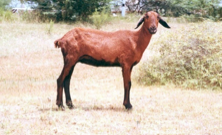 |
 |
|
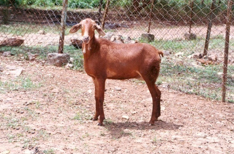 |
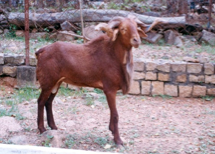 |
| Kilakarsal |
|
Madras red |
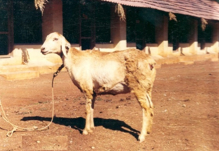 |
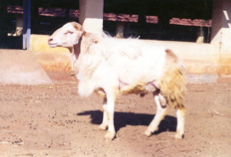 |
|
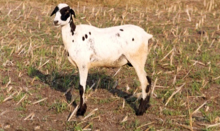 |
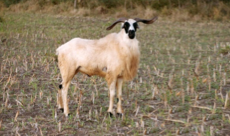 |
| Mecheri |
|
Ramnad White |
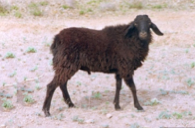 |
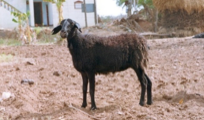 |
|
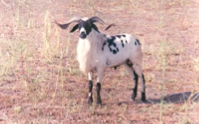 |
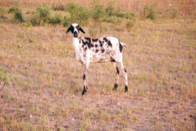 |
| Trichy Black |
|
Vembur |
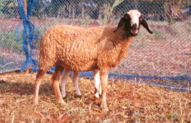 |
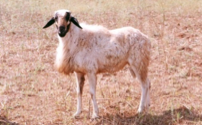 |
|
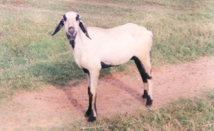 |
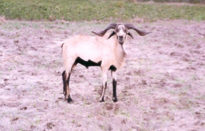 |
| Coimbatore |
|
Nellore |
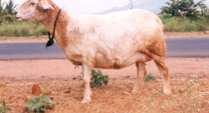 |
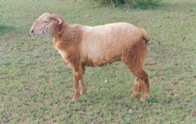 |
|
|
|
| Mandya |
|
|
|
III. Eastern region
This region consist Bihar, West Bengal, Orissa, Assam, Meghalaya, Arunachal Pradesh, Mizoram, Manipur, Tripura, Nagaland and Sikkim. Most of the wool produced in this region is suitable only for coarse carpets, blankets and kumblies. The important breeds are Shahabadi, Chhottanagpuri, Ganjam, Balangir, Bonpala and Tibetan.
IV. Northern temperate region
It comprises of Jammu and Kashmir, Himachal Pradesh and hilly regions of Uttar Pradesh. This region has 8% of the total sheep population. The largest population of crossbred sheep primarily developed for apparel wool is in this region. The important breeds are Rampur Bushair, Gaddi, Gurez, Karnah, Poonchi and Changthangi.
Exotic breeds of sheep
| A. Fine wool breeds |
|
|
|
1. Merino: Native of Spain - origin for most of the wool breeds in the world. Colour-white. Fleece yield male: 4-5 kg and ewes 3-4 kg/annum. Merinos have large number of skin folds. |
 |
2. Rambouillet: Developed from Merinos in France. They are large, rugged, fast growing sheep and are good wool producers. Skin is pink. Ewes are good mothers, and prolific. Average wool yield is 4 5 to 5.5 kg. |
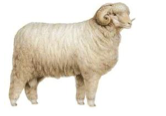 |
| B. Mutton breeds |
|
|
|
1. Native of U.K. large animals with black face, ears and legs. Head and ears are entirely free from wool. Average wool yield 2-3 kg. Mature rams weigh 100-135 kg and ewes from 70-100 kg. |
 |
2. Dorset: Native of U.K two types polled and horned Dorsets. Face, ears and legs white in colour and free from wool. Wool yield is 2.75 to 3.25 |
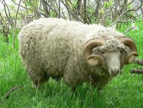 |
| C. Dual purpose breeds |
|
|
|
Corriedale: Native of New Zealand. The parent breeds involved in developing Corriedale are Lincoln, Leicester and Merino. Adult rams: 80 to 100 kg Ewes: 55 to 85 kg. Annual wool production: 4.5 to 5.5 kg. Both sexes are polled. Colour: White may have black spots. |
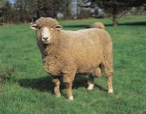 |
Source:
Dr. R. Mathivanan
Professor and Head,
Department of Animal Husbandry and Veterinary Science,
Tamil Nadu Agricultural University, Coimbatore - 3
Updated on : Sep 2014
|